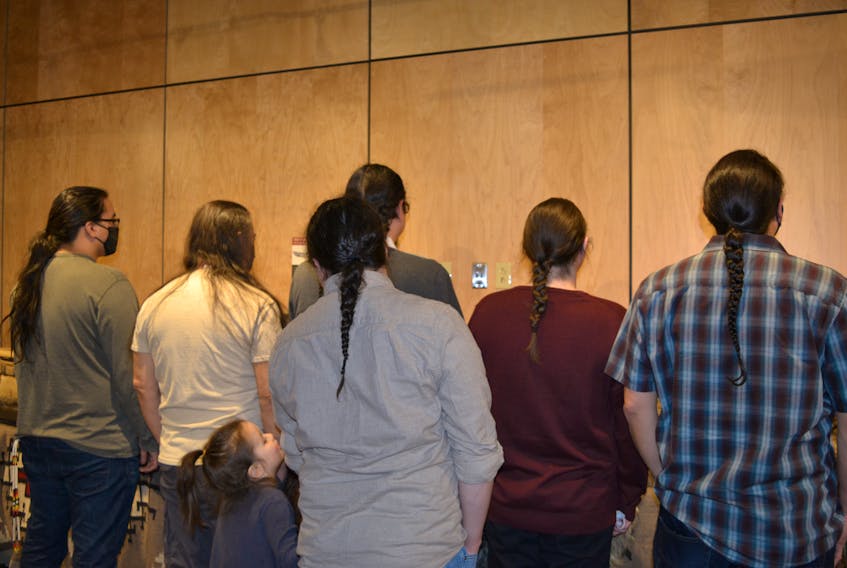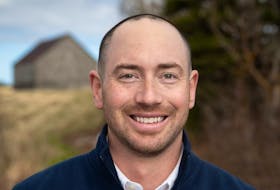SYDNEY – Danny Paul of Membertou First Nation has been wearing his hair long for 50 years. He remembers that at the Indian Day School he attended in Membertou as a child, he was forced to keep his hair short.
Paul points out that for those who were removed from their families and communities to attend residential schools, “the hair would be the first thing to go. They’d cut their hair because they knew it was important to our people.”

Residential schools were established by the Canadian government in the late 1800s, with the goal of assimilating Indigenous children by disconnecting them from their culture and traditions.
In its 2015 report, the Truth and Reconciliation Commission asserted that forced hair cutting and other practices used by residential schools amounted to "cultural genocide." The attitude of the Canadian government in the early years of Confederation is summarized by this excerpt from a letter written by Duncan Campbell Scott, the deputy superintendent general of Indian Affairs in 1931:
“It is the opinion of the writer that … the Government will in time reach the end of its responsibility as the Indians progress into civilization and finally disappear as a separate and distinct people, not by race extinction but by gradual assimilation with their fellow citizens."

Stephen Augustine, a hereditary chief of the Mi'kmaq Grand Council and the associate vice-president of Indigenous Affairs at Unama'ki College at Cape Breton University, has had long hair for most of his life.
He first grew it in the 1960s, “during Beatlemania and the civil rights movements in the United States with Malcolm X, and then immediately behind that was the red power movement, the Native America movement, the stand-off at Wounded Knee … so for most Native Americans and Canadians it was more a cultural thing than a hippie thing to grow their hair and I’m one of the ones that grew my hair to stand up against colonialism, that kind of ideology.”
Augustine says he now wears his long hair proudly, and doesn’t often get negative comments about it but when he was younger it was sometimes an issue.
“Every time I would get a job with the federal government they would say, ‘We require people with shorter hair than you have, can you cut it?’ and I’d say, ‘Yeah, I can cut it,’ but, I mean, it hurt. It hurt me but I also wanted to work.”

As an elder advisor with the Truth and Reconciliation Commission, Augustine travelled the country between 2010 and 2015, hearing stories from residential school survivors.
“One of the stories that stuck out for me was, when children ran away from residential schools, and they did that often enough, they would bring them back (and) they would literally cut their hair bald as a punishment for running away and it would discourage them from running (away) because they would embarrass them in front of the other kids.”
Augustine says when he heard about eight-year-old Linden Lafford from Potlotek First Nation being bullied by a non-Indigenous man and a child for his long hair, it was disappointing but not surprising.
“A lot of young kids in First Nations communities across Canada experience this in their lives and it’s become normalized, being taunted and made fun of for having long hair. He’s got every right to grow his hair long just like me and it shouldn’t make him feel any less valued in our society.”

Lafford was visiting a public washroom alone at Lanes at Membertou when he was told by another patron to go to the women’s washroom because his hair made him look like a girl. Lafford received thousands of messages of support after his mother, Mary Lafford, made a public Facebook post expressing her anger and distress over the incident.
Danny Paul, when discussing Lafford’s experience, says, “I wish that bully were here now. Not so that I could yell at him or berate him but so that we could teach him.”
At Membertou Heritage Park, workshops are available to learn about Mi’kmaq culture and history, says general manager Jeff Ward. He also wears his hair long as his ancestors did. He says it is taught that long hair strengthens the spirit and that when the hair is braided the three strands represent the mind, body and soul.
“Your hair, we’re taught from our elders and our teachings, your hair is sacred and it’s an extension of your spirit. Only my wife braids it because this is my spirit and not just anybody can touch my hair.”
Ward says he’s shocked when visitors to Membertou Heritage Park or even strangers he meets out in the community touch his hair.
“They’ll say, ‘Oh, I love your hair and I respect your hair and your culture so much,’ and they touch my hair not realizing what they did by touching my hair without permission. It hurts when someone does that but I forgive them because I know they don’t know the teaching.”

Ward says everyone is welcome to visit Membertou Heritage Park and to attend their offering of cultural workshops that teach about Mi’kmaq protocols, perceptions and teachings, legends and stories and how to be an ally.
Ward says it’s important to keep in mind that all Canadians have rights and responsibilities under the treaties signed by the federal government and Indigenous peoples.
“It’s fine if people don’t believe in what we’re saying, don’t share these beliefs but what we’re asking for is respect necessarily given to people with long hair, especially men.”









